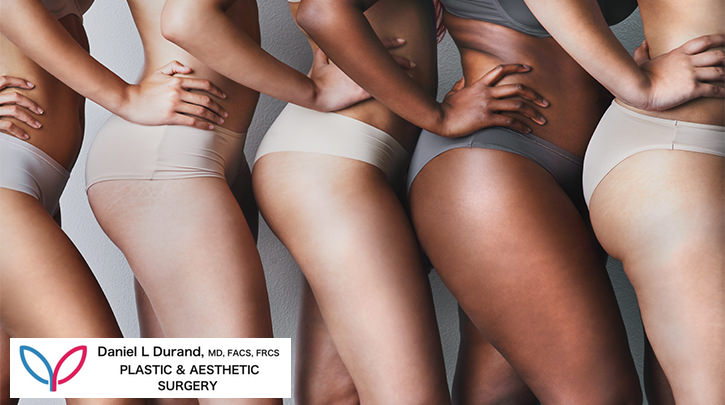
17 Nov How to Manage Different Types of Body FAT and FEEL BETTER …
Why is it so tough to lose or even manage your weight? Weight gain, loss, and maintenance requires a complex balance between not just fat and muscle, but six different types of body fats. With calorie counting added to this long list, weight loss can be more than just a little daunting. Make your path to weight loss success a little simpler with this guide that’ll help you break down the basic facts to weight management based on fat types.
Did you know there are 6 types of Body fat?
What Are the Different Types of Body Fat?- and how can you manage your fat….
The six top types of body fat include essential fat, brown fat, white fat, beige fat, subcutaneous fat, and visceral fat. While there may be varying ways to approach the categorization of body fat, it’s easiest to consider what’s predominantly good and bad for your overall health. For the most part, a healthy balance between most of these fats should be the target.
1- Essential Fat
Good or bad? Very good
What is it? The most aptly named fat type, essential fat is required for good health. It plays a role in regulating body temperature, vitamin absorption, and the production of fertility hormones, among other essential roles. Essential fat isn’t highly visible, but is located throughout the body.
How do I manage it? Essential fat is “good” fat, meaning this isn’t the type you’ll target for weight loss. For females, 10-12% essential fat is the general range for good health, with 2-4% being the ideal range for men, according to the American Council on Exercise. Essential fat loss is generally the result of extreme and unhealthy exercising and dieting.
2- Brown Fat
Good or bad? Good
What is it? Brown fat burns energy and is primarily responsible for maintaining the body’s core temperature. Because brown fat isn’t a storage fat, it’s easy to burn, especially in cooler climates.
How do I manage it? You don’t really need to manage brown fat aside from maintaining essential fat levels to support healthy brown fat production.
3- White Fat
Good or bad? Kind of good, kind of bad
What is it? White fat is the body’s largest energy storage system. Due to its production of the hormone adiponectin, white fat is essential for insulin management to maintain a healthy blood sugar balance and, as a producer of leptin, it also helps to manage hunger. White fat also plays a role in managing growth hormones and cortisol. While white fat can be a good thing, too much of it becomes a bad thing. In greater levels, white fat can cause insulin resistance, raising the risk for weight gain and its accompanying health concerns.
How do I manage it? Stubborn excess fat on the thighs, hips, and abdomen are a key sign of higher white fat levels. Target training workouts that build muscle tissue, which burns more calories than fat, can help to reduce white fat levels in the body. Also, a study in the journal Cell suggests that paying closer attention to your body’s hunger cues (i.e. eating more consistently and stopping when you feel satisfied rather than uncomfortably full) can encourage the transition of white fat to brown fat.
4- Beige Fat
Good or bad? Good
What is it? Beige fat is created when the body is exposed to stress, leading to the “beiging” of white fat. While a high level of beige fat isn’t really a target goal, it’s definitely a step in the right direction to maintain healthy levels of good brown fat; it essentially allows for the transformation and burning of bad fat as thermal energy to maintain the body’s core temperature.
How do I manage it? Beige fat’s role in transforming white fat to useful thermal energy makes it a good target fat for weight loss. Exercise is considered a key stressor for transforming white fat to beige fat due to the production of the hormone irisin. The key here is stress, so aim for at least 75 minutes of vigorous exercise each week and favor high-intensity interval training to increase irisin levels that prompt the “beiging” of white fat.
5- Subcutaneous Fat
Good or bad? Good and bad
What is it? Located just under the skin, subcutaneous fat accounts for approximately 90% of overall body fat percentage. Commonly accumulating as stubborn thigh fat in females or around the abdomen in males, subcutaneous fat is responsible for the sex hormone estrogen. Because estrogen plays a larger role in female fertility, females tend to have higher levels of subcutaneous fat. This fat type also acts as a cushion between muscle and skin tissue for protection and comfort.
How do I manage it? Subcutaneous fat is essential but too much, particularly around the abdomen, runs the risk of increased health complications. Because the body stores subcutaneous fat as a sort of emergency backup in case of starvation or caloric deprivation, this type of fat is the hardest to target. A reduction in calories consumed, a focus on improved nutrition to avoid refined carbs and processed foods, and regular high-intensity exercise can, over time, burn off excess subcutaneous fat. Alternatively, for more stubborn fat pockets, LIPOSUCTION body shaping treatments, when combined with a healthy diet and regular exercise, may further help to reshape localized areas for quicker, more visible results.
6- Visceral Fat
Good or bad? Bad
What is it? Visceral fat is found in the abdominal area between organs. It accumulates and secretes retinol-binding protein 4, a known culprit in insulin resistance. Higher levels of visceral fat are also linked to an increased risk of colorectal and breast cancers, dementia, stroke, and Alzheimer’s disease. Visceral fat levels generally increase with age.
How do I manage it? One of the best ways to minimize visceral fat levels is to revamp your diet. Cut out processed foods and increase your intake of lean proteins (chicken, eggs, beans), unsaturated fatty foods (fish, nuts, avocados), whole grains, and fiber (beans, berries, oatmeal). Improving sleep hygiene will also offer fat-burning benefits, with seven to nine hours of sleep being the general target. Additionally, targeted abdominal strength-training exercises will increase caloric burn and help melt away visceral fat as compared to cardio.
For more information on how to manage your body’s fat deposits, and to live a happier & healthier life, Dr Durand will be happy to evaluate your individual situation , and he will help you attain your goals!
Please call 514-941-5562 to book your personalized consultation
Dr Daniel Durand, MD, FACS,FRCSC , plastic surgeon



